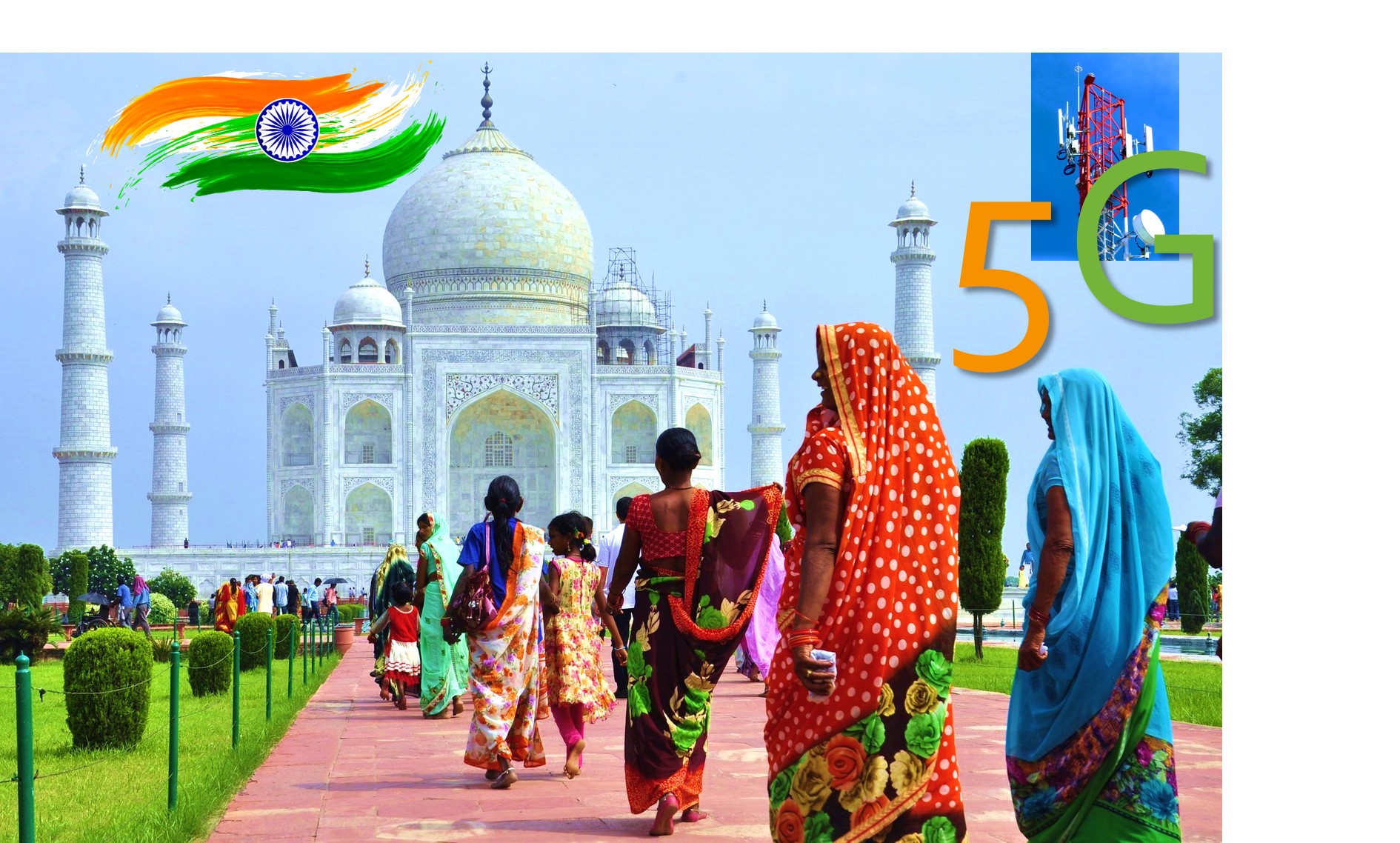India’s digital transformation focuses on the upcoming rollout of 5G services and its economic impact. (Picture: Pixabay)
With the roll-out of 5G services on a large scale, India is taking a big step towards digital transformation. Doing so will have massive economic implications, both for the developing country itself and its global partners. Which lessons can the West learn from India’s 5G expansion?
Whilst China hoists the flag of 5G expansion the highest, in not just the Asian but the global firmament, its South-Asian neighbour takes promising strides to soon overtake the 5G realm. As of October 1, 2022, the Indian national capital of New Delhi has announced, that Indian mobile phone users will soon experience ultra-high Internet speeds via 5G wireless technology, with Prime Minister Narendra Modi launching the next generation mobile network. In an exhilarated tone, the Indian Prime Minister told the Press: “Today, 1300 million Indians are getting the gift of 5G.”
While launching the service at the sixth Indian Mobile Congress, PM Modi further embellished his words by referring to 5G as a knock on the doors of a new era in the country and the beginning of an infinite sky of opportunities. Given the whopping financial investment, this ambitious project oversees, experts conclude, that this signals the independence of India, which had previously relied on other superpowers for telecommunications support. This new-gained autonomy promises to fast-track development and tighten homeland security within India. However, for its long-established competitors like China, South Korea, and the USA, this could be a cause for concern.
India’s second independence with 5G
During the recent Indian Mobile Congress, Indian PM Modi pointed out, that while India was dependent on other countries for 2G, 3G, and 4G technologies, with 5G, India has created a new history and is setting a global standard in telecom technology for the first time. “New India will not remain a mere consumer of technology, but India will play an active role in the development and implementation of that technology. India will play a big role in designing the future wireless technology, and manufacturing related to it,” he told the newspaper, The Hindu.
The current Indian government’s vision for Digital India has been founded on four pillars — the cost of devices, digital connectivity, data cost, and the digital-first approach. This approach has led to mobile manufacturing units in India increasing from just two in 2014 to over 200 at the current moment, bringing down the cost of handsets. Likewise, PM Modi pointed out, India now has the world’s lowest data charges of about ₹10 (€0.12) per Gigabyte, down from ₹300 (€3.69) per Gigabyte in 2014.
“New India will not remain a mere consumer of technology, but play an active role in the development and implementation of that very technology. India will play a big role in designing the future wireless technology, and manufacturing related to it.”
Narendra Modi, Prime Minister of India
Deeming the ‘Digital India Movement’ as more than just a government scheme, Indian telecommunication Moguls and other industrialists are placing their bets on the 5G horse. In a bid to give the populous country an edge in connectivity and efficient productivity, the Indian Government has announced its extensive budget for laying down the edifice of a well-planned 5G infrastructure.
According to Mint, an Indian business news publication, the cumulative economic impact of 5G on India is estimated to reach USD 450 billion by 2035. Capable of supporting ultra-high-speed internet, the fifth generation or 5G service is expected to unleash new economic opportunities and societal benefits, serving as a transformational force for Indian society.
According to Economic Times, India has overtaken the UK to become the world’s fifth-largest economy and is now behind only the US, China, Japan, and Germany, according to IMF projections. Whilst being a considerable military and economic contender, India’s need for development in rural connectivity, mass literacy, and balancing the currency (INR) against the challenges of rising fuel prices and World conflict, have taken the forefront. While the Indian Government does not herald 5G as a one-size-fits-all solution for all these shortcomings, it definitely recognizes the role of the fast-paced broadband cellular networks, in catalyzing these betterments.
The economic impact of 5G on India
The GSMA (Global System for Mobile Communications), the global industry body representing mobile network operators, has released a report on India’s digital transformation journey, particularly focusing on the upcoming rollout of 5G services and its economic impact. NDTV Profit concluded the following from the GSMA report:
- 5G is likely to benefit the Indian economy by ₹ 36.4 trillion ($455 billion) between 2023 and 2040, showed the GSMA report. The benefit of 5G technology is expected to be realized in the manufacturing sector (representing 20 percent of the total benefit), retail (12 percent) and agriculture (11 percent), etc.
- 5G will account for more than a third of the total connections in India by 2030, with the share of 2G and 3G dwindling to less than 10 percent. It also noted that India’s high level of 4G adoption (79 percent) indicates a subscriber base ready to transition to 5G.
- While the proportion of connected adults (people above 18) in India has grown, a third of those covered by mobile broadband networks do not yet use the service. Lack of literacy and digital skills remains the greatest barrier, it noted.
- There is also a considerable gender gap in mobile ownership and mobile internet use. While there is a 14 percent gender gap in mobile ownership, the figure shoots up to 41 percent in mobile internet use. The report noted that a lack of awareness and digital skills are among the top barriers to mobile internet adoption and usage among women.
The 5G onset across India from October 1, is being done in close cooperation with Reliance Jio, the country’s leading mobile operator with 413 million subscribers. This step could have a transformative effect. 5G rollout in India will come through Jio Platforms, the digital services arm of billionaire Mukesh Ambani’s Reliance Industries.
In August, Ambani told shareholders at Reliance’s annual general meeting that the rollout will be completed by December 2023 and that infrastructure investments will amount to INR 2 trillion (US$25 billion). The majority of Indians watch streaming content on mobile devices. Since fixed broadband penetration in the country is low, Reliance aims to fix this with Jio AirFiber, reported the German online portal quotenmeter.de.
“We need to think and re-imagine 5G for India,” said Saurabh Sancheti, Group CFO of Jio Platforms, at the APOS conference in Singapore. “AirFiber can actually capture hundreds of millions of homes in India, and it can do it very quickly,” said Sancheti. “Higher speeds, better data consumption, and increasing data consumption would also give videos a boost. So I think this will certainly change streaming as we know it in India,” he optimistically added.
Lesson for the West
Western countries have had their share of reservations about a full-fledged 5G expansion. Several concerns are being raised in regards to compromised intelligence due to Chinese companies like Huawei, the feared health implications of 5G or the environmental harm that 5G could trigger. These inhibitions call for extensive research to dispel the myths. With 6G technology already around the corner, the delayed action of the West could result in it falling behind in the race for faster-speed information. Experts fear, autonomous 5G infrastructure and production, which Asia now heavily invests in, could potentially deter the West and therefore change the power dynamic of the World. For better or for worse.









Leave A Comment